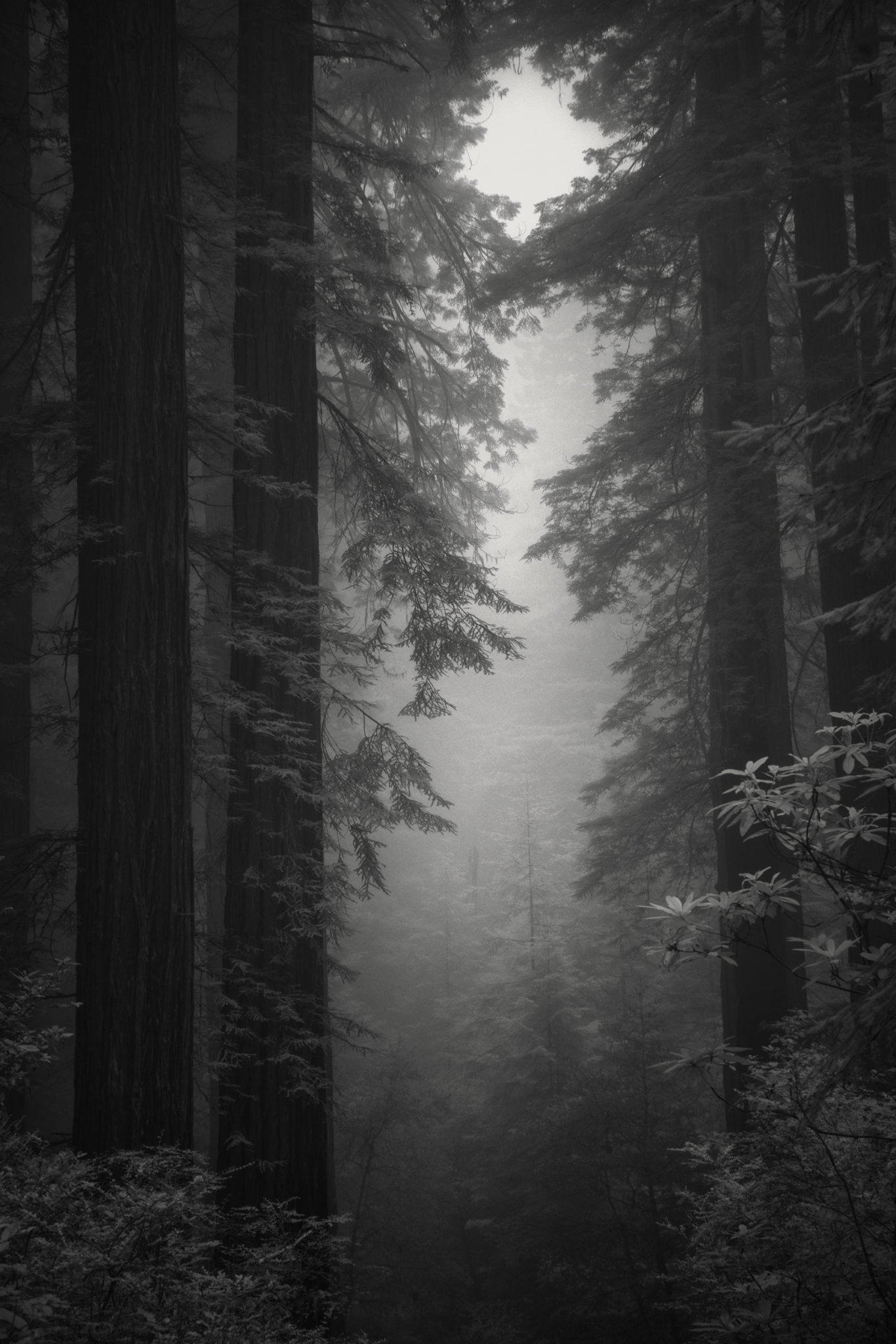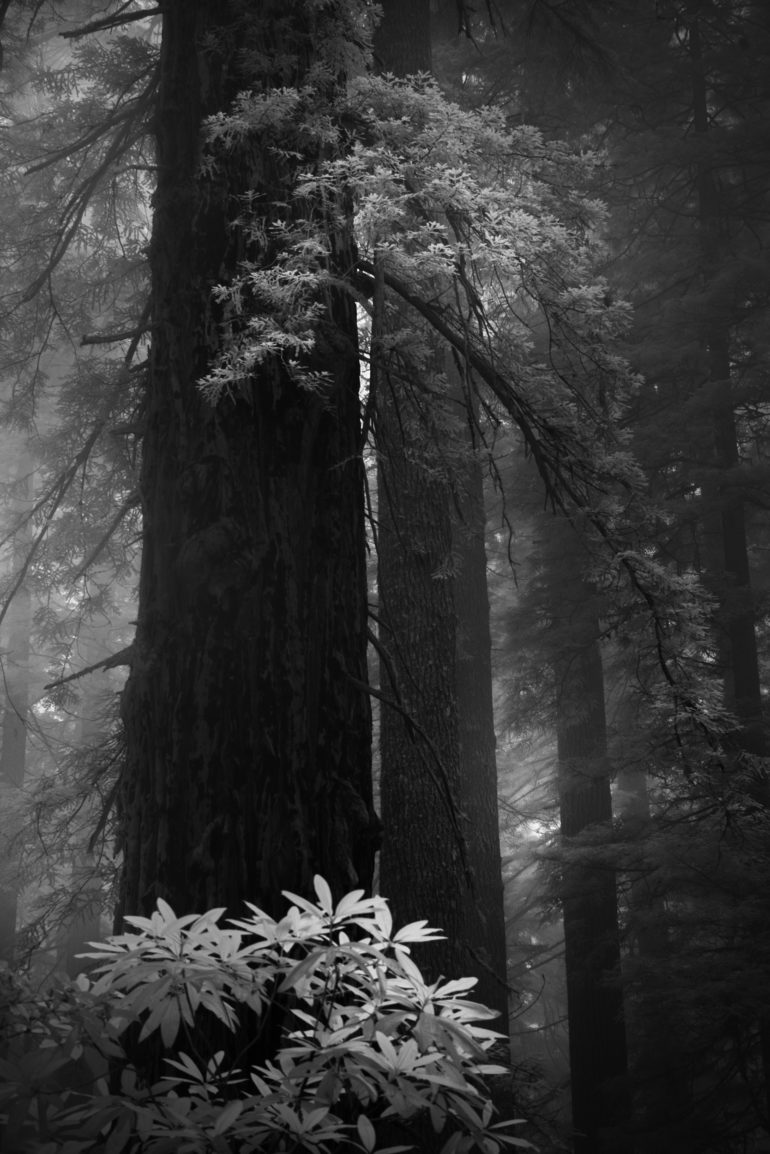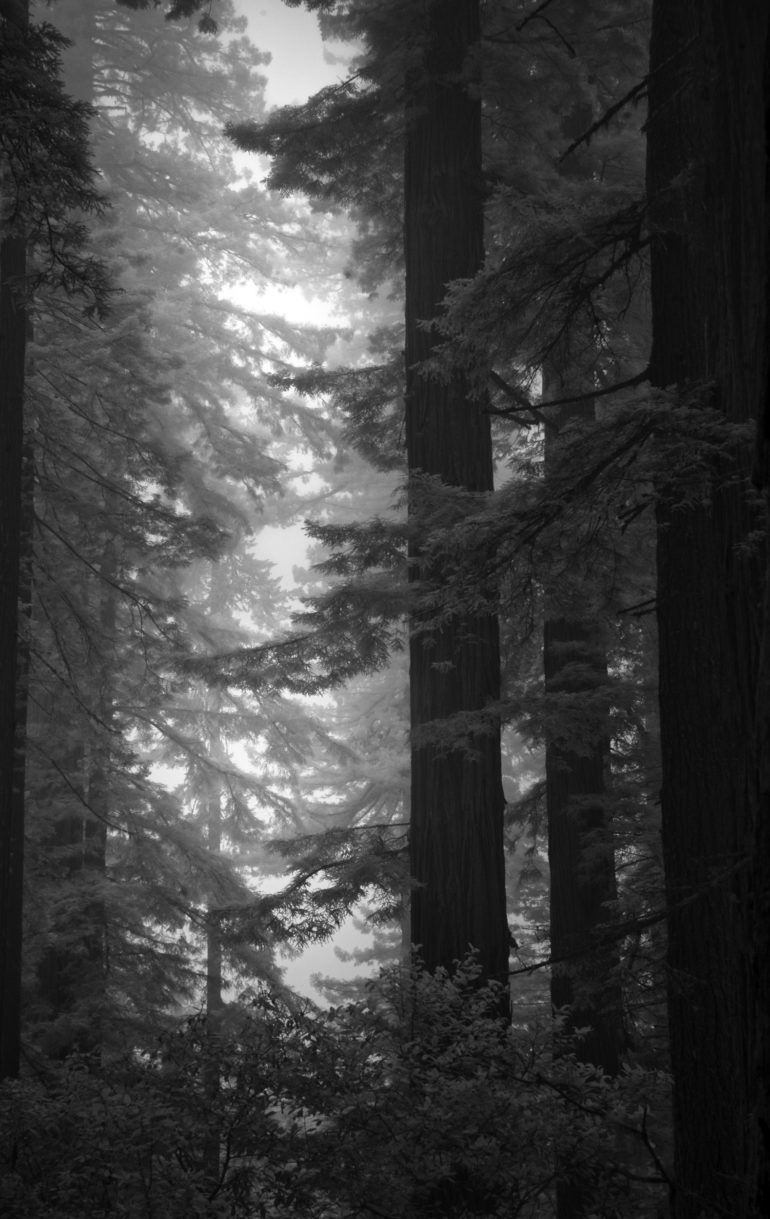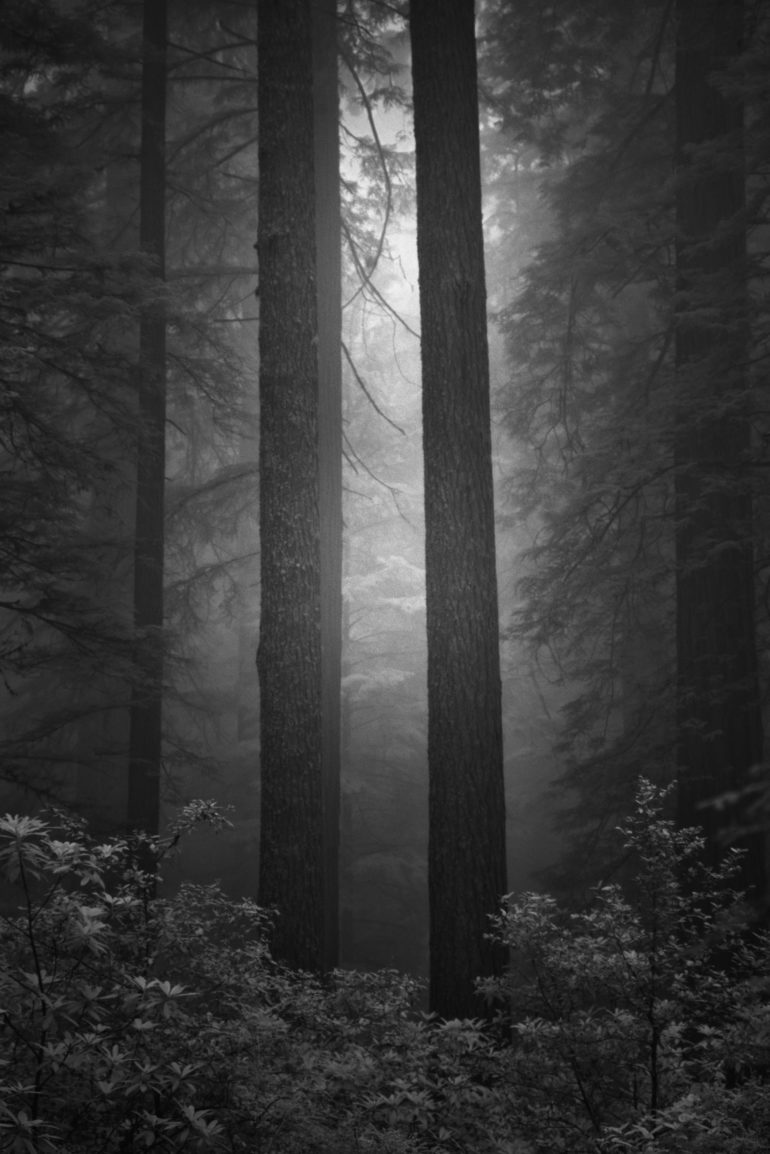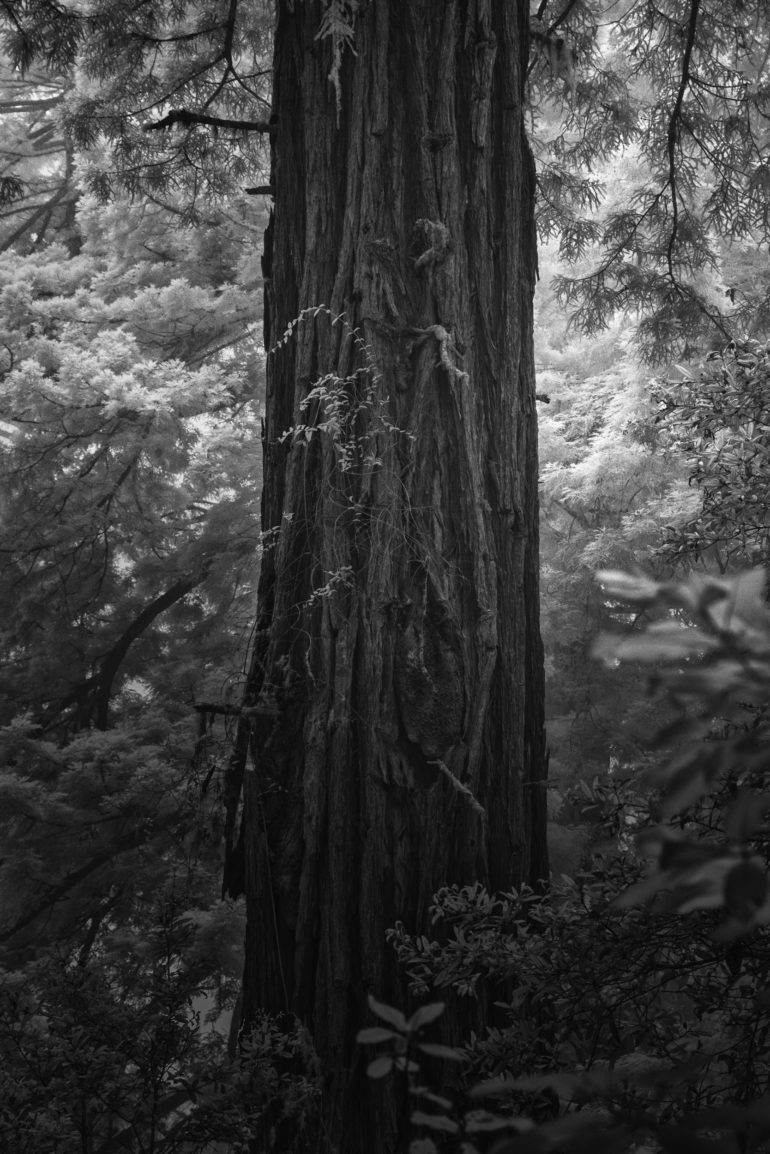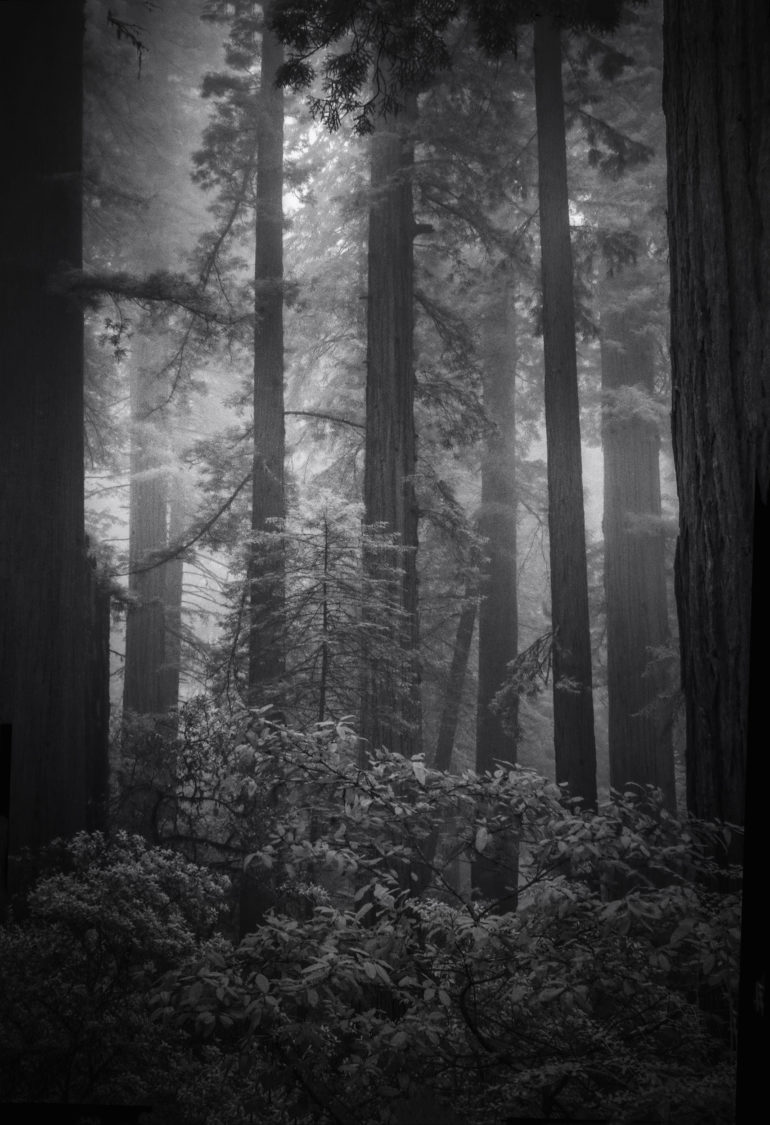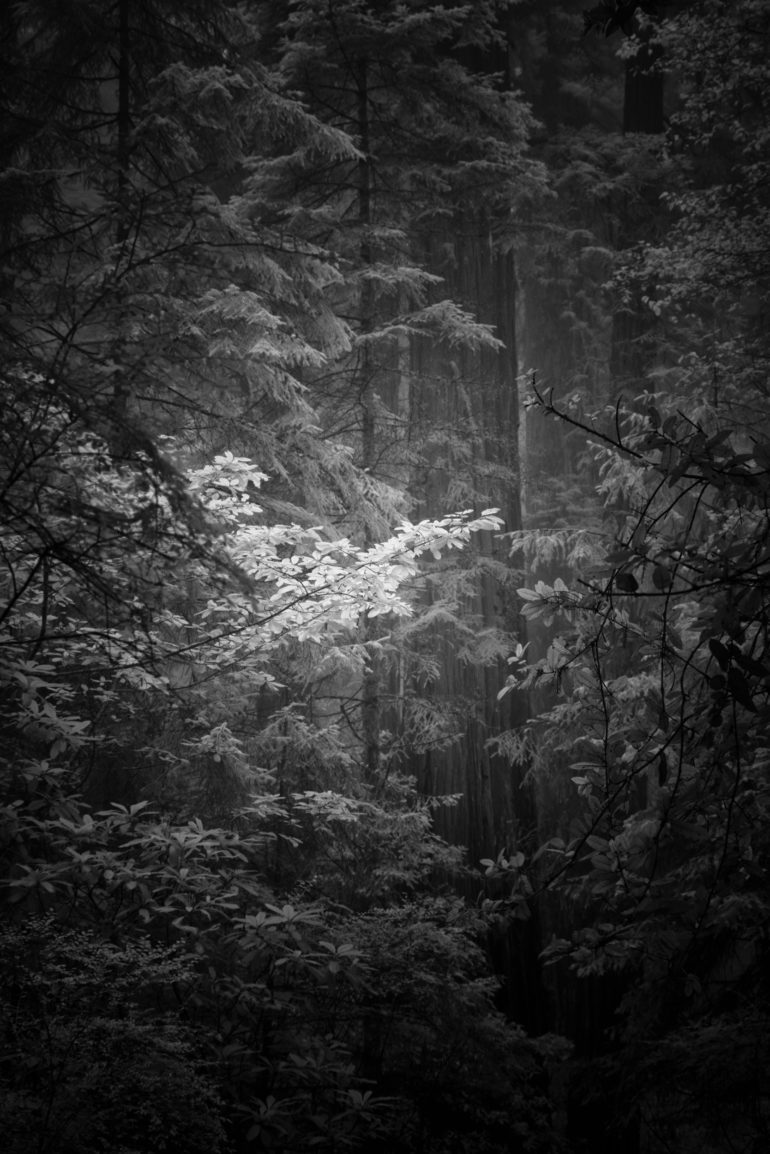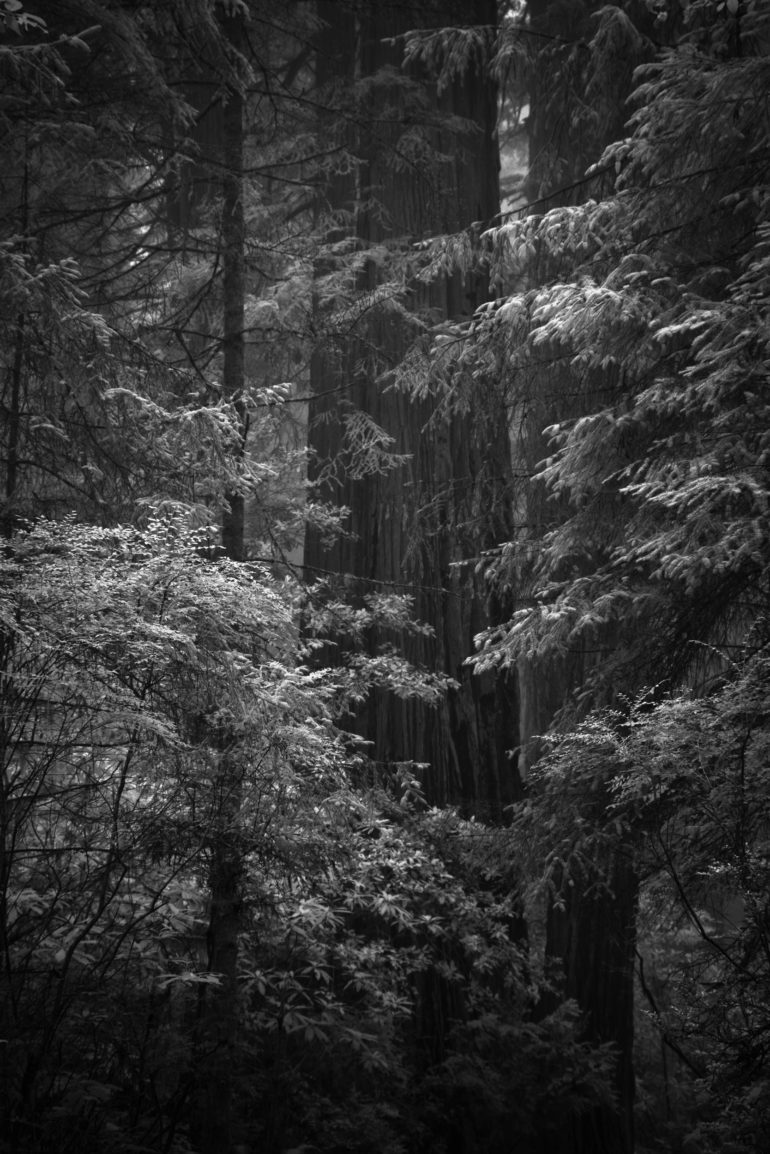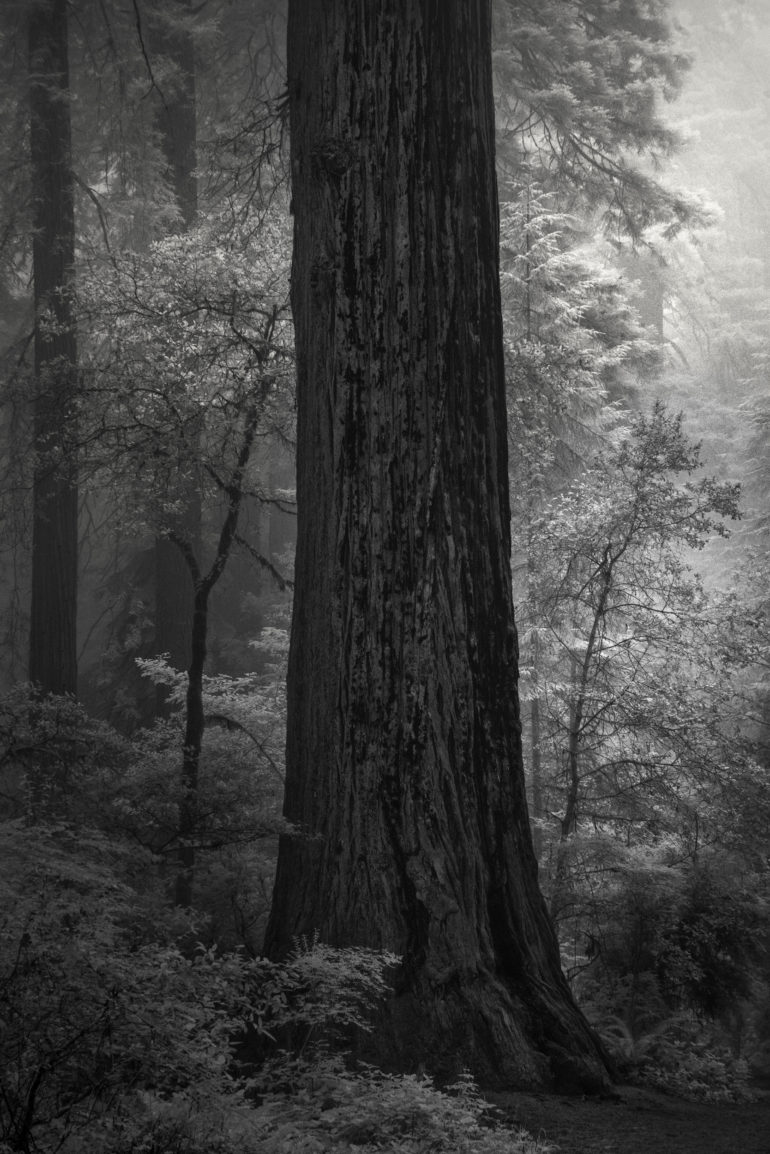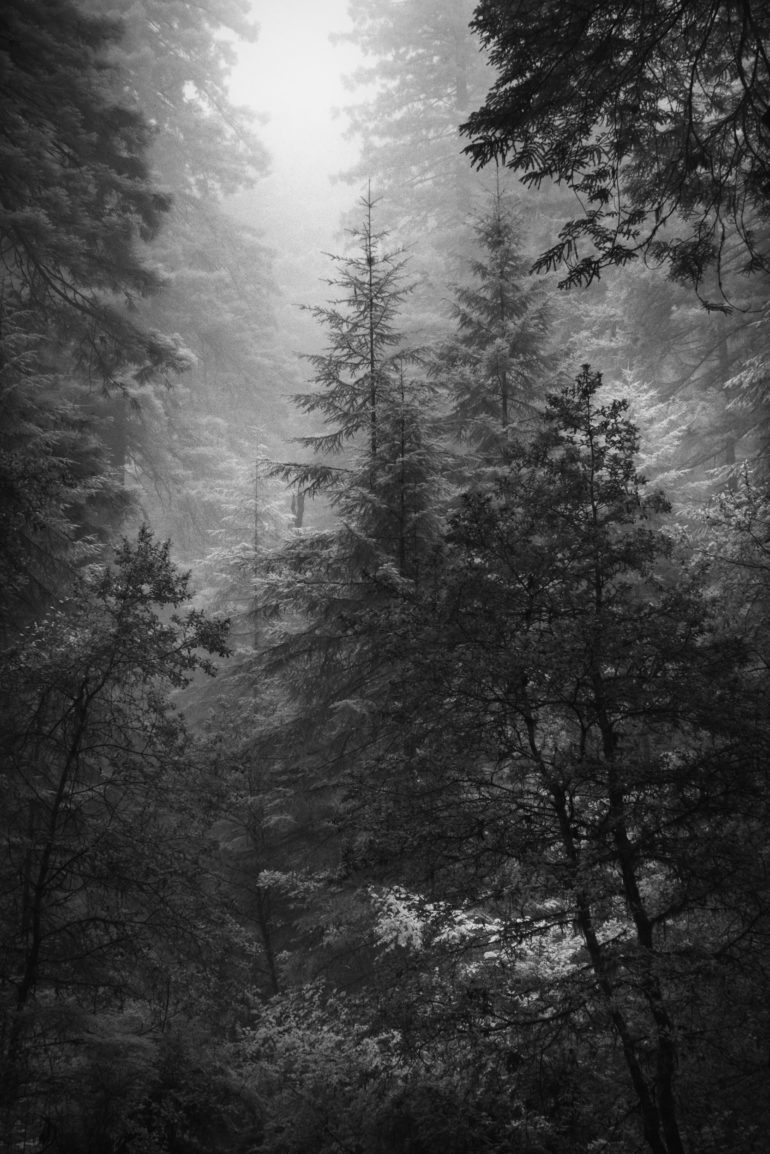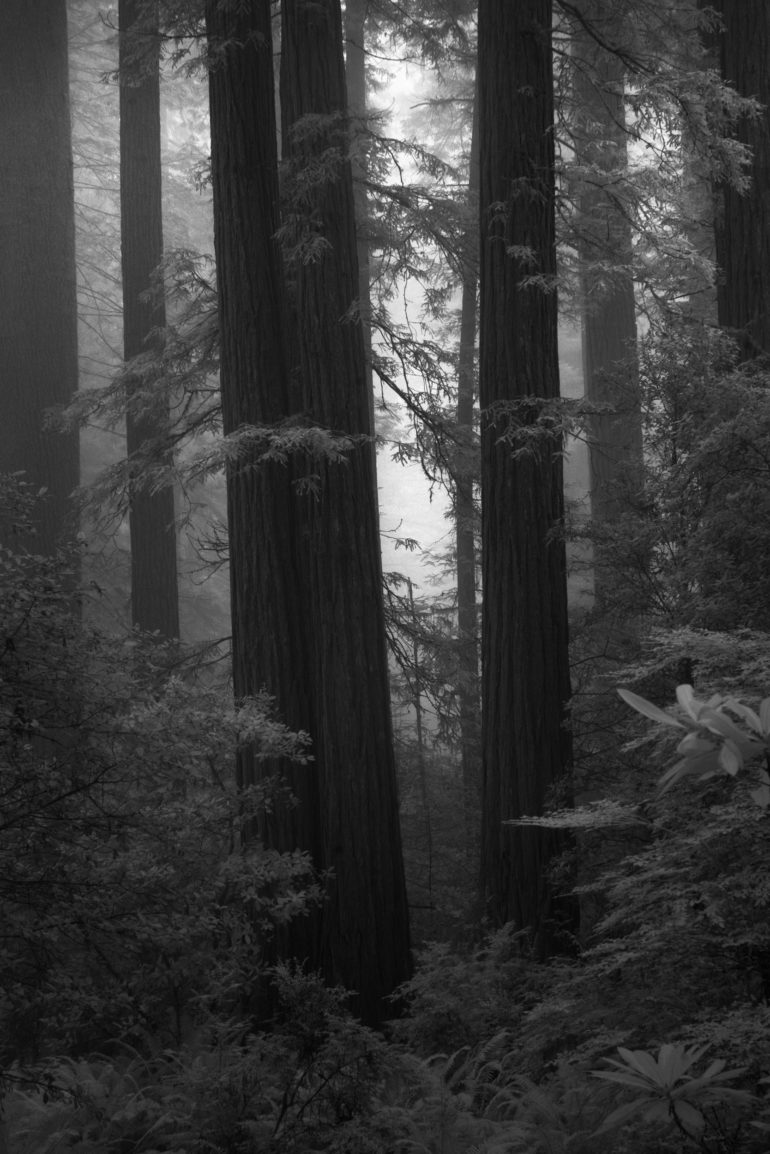Last Updated on 09/17/2018 by Chris Gampat
Among Giants is the latest series by surreal landscape photographer Nathan Wirth.
Maybe I’ve been watching too many horror movies, but if you look at Nathan Wirth’s latest series Among Giants just the right way it can appeal super spooky. The series is a number of infrared photos shot of some of the giant redwood trees here in the US. The addition of the infrared nature to the images makes them look eerie, ethereal and at the same time gives off a haunting beauty to them. We got to ask Nathan a bit about the new series.
Phoblographer: What was the inspiration for this series?
Nathan: The redwoods invoke awe when you walk among them. They stretch far, far into the sky— so much so that they block much of the light, and the temperature in the forest drops dramatically. They are, quite simply, magnificent trees. They invoke awe and reverence. But, due to their size, it is impossible to actually photograph them. At best, you can only fit a portion of their height into a frame. In the past, I would use a wide angle lens and try to squeeze as much of the trees’ immensity into a frame, but for these images, I chose to bring a zoom lens (70-300)– and instead of standing close to the trees with a wide angle, I stood a good distance from the trees and zoomed in to frame the lines of various groupings of trees, trying to capture as much light as possible in the mists surrounding the trees. I see the final images as, ultimately, a semi-abstract way of capturing the actual trees. Classically, most photographers capture them in color when it is foggy– and they highlight the reddish-brown textures of the trunks against the greens of the leaves and ferns (and, if the right time of the year, the pinks and purples of rhododendron flowers). I wanted to photograph them in black and white and try to capture some interesting contrasts and tones.
But, the real answer to your question is: the trees themselves were the only inspiration I needed (and, at the same time, I also wanted to work on the challenge of photographing their silence through my particular way of doing things).
Phoblographer: This is a major deviation from much of your other work involving the seascapes and landscapes against the sky. What made you want to change it up?
Nathan: Jon Steinbeck in his book Travels with Charley, writes:
“The redwoods, once seen, leave a mark or create a vision that stays with you always. No one has ever successfully painted or photographed a redwood tree. The feeling they produce is not transferable. From them comes silence and awe. It’s not only their unbelievable stature, nor the color which seems to shift and vary under your eyes, no they are not like any trees we know, they are ambassadors from another time.”
And Steinbeck is correct. These images have not truly captured them, but I hope they offer a bit of an interpretation, one that dances around the subject but still captures some of their beauty. I really wanted to capture the feeling of silence in the woods. In my mind, this is expressed in the light insisting that its presence remains even in the misty fog. Hopefully, that silence is also expressed in the contrasts between the blacks, grays and whites. But I have to leave such judgments to the viewer.
I have, of course, not given up on seascapes and landscapes against the sky. I still work on them and have many new images. That said— I have been branching out into forests (I recently photographed an old growth forest of oaks) and working on a series born from dance movement (one to two second exposures).
Phoblographer: Still going to shoot in crappy weather only?
Nathan: Yup! I love the sun, but I just don’t photograph on sunny days very often. Shitty weather equals wonderful light. Every time. It is a simple, but effective “equation.”
Phoblographer: Tell us a bit about the gear used please.
Nathan: I used an infrared-converted Sony A7r and a Sony G series 70mm – 300 mm lens. Each shot is handheld (which for me is highly unusual because I really prefer using a tripod). For processing, I used Photoshop to dodge and burn and Nik Silver Efex to fine tune some of the contrasts.
As many already know, photographing a forest can be especially frustrating because of how difficult it is to balance the exposure between the trees and the brightness of the sun shining in (leaving one with the choice of exposing for the trees and ending up with overexposed light or exposing for the light and being left with dark, underexposed silhouettes for the trees). The mists, in these redwood tree shots, make it much easier, but using an infrared-converted camera also helps. The way the infrared camera captures the light significantly reduces that problem.
All images used with permission.


